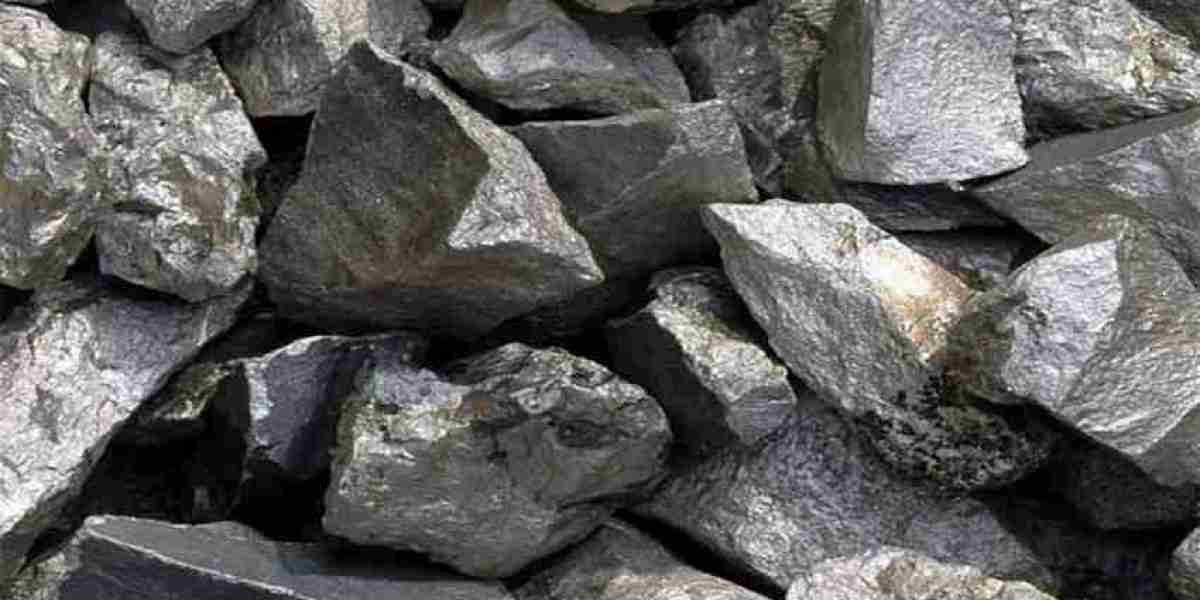The global shift toward decarbonization and sustainable industrial development is profoundly influencing the Ferro Vanadium Market. As governments and corporations intensify efforts to meet climate goals, the demand for clean energy technologies and greener construction materials is reshaping how vanadium is produced and consumed. Traditionally essential in steelmaking, ferro vanadium is now gaining attention for its indirect role in enabling clean energy storage and environmentally resilient infrastructure.
This article explores how the ongoing energy transition and increasing demand for clean technologies are transforming market dynamics, creating both challenges and new growth avenues in the ferro vanadium sector.
The Role of Ferro Vanadium in the Green Economy
1. Decarbonized Construction and Green Steel
Ferro vanadium is a critical additive in producing high-strength low-alloy (HSLA) steels, which allow for stronger, lighter, and more durable steel structures.
Benefits in Green Construction:
Reduced material usage due to enhanced strength.
Lower carbon emissions per unit of output.
Extended structure lifespan, supporting circular economy goals.
Governments are pushing for green building codes, which increasingly mandate the use of such advanced steels in bridges, railways, high-rise buildings, and transportation systems.
2. Vanadium in Renewable Energy Storage
While ferro vanadium itself is not directly used in energy storage, the raw material—vanadium—is a key component in vanadium redox flow batteries (VRFBs).
VRFBs provide:
Grid-level storage to stabilize intermittent wind and solar power.
Long-duration energy supply for rural and off-grid electrification.
Recyclability and safe, non-flammable operation.
The rise of VRFBs is creating a dual demand stream for vanadium resources, pressuring ferro vanadium producers to balance alloy and battery-grade output.
Energy Transition Drivers Boosting Market Potential
1. Global Carbon Neutrality Goals
Over 150 countries have committed to net-zero targets by mid-century, increasing investment in clean infrastructure, smart grids, and sustainable transportation—all of which require vanadium-strengthened steel.
2. Electrification of Transport
Electric vehicles (EVs) require lightweight, high-strength materials for safety and efficiency.
Ferro vanadium is used in automotive components such as:
Chassis and body structures.
Brake systems.
Electric motor casings.
As EV production scales globally, especially in China, Europe, and the U.S., ferro vanadium demand is expected to rise in tandem.
3. Resilient Energy Infrastructure
Extreme weather linked to climate change demands more resilient energy and utility infrastructure.
Vanadium-enhanced steel resists corrosion, heat, and mechanical fatigue.
Ideal for wind turbine towers, power plants, oil rigs, and transmission lines.
Regional Growth Catalysts
a. Europe
European Green Deal and Fit for 55 packages prioritize low-emission construction and renewable energy.
Ferro vanadium aligns with EU targets on resource efficiency and lifecycle sustainability.
b. China
Dominates both the steel and vanadium markets.
Dual Carbon strategy (carbon peak by 2030, neutrality by 2060) fuels demand for HSLA steels and VRFBs.
c. India
Infrastructure expansion under PM Gati Shakti and smart cities programs requires stronger, greener materials.
Strong potential for domestic ferro vanadium production to meet internal demand.
d. United States
Investment through the Inflation Reduction Act supports domestic clean energy supply chains and grid modernization.
Ferro vanadium demand expected to rise as steel production localizes and battery projects expand.
Sustainability Trends in Production
Ferro vanadium producers are under pressure to reduce emissions, water usage, and waste generation across mining and smelting processes. Innovations include:
Plasma smelting to reduce carbon footprint.
Hydrometallurgical processing to recover vanadium from spent catalysts and steel slag.
Solar- or wind-powered furnaces to cut dependence on fossil fuels.
Many producers are also publishing ESG reports to attract green investors and comply with global reporting frameworks.
Challenges in Meeting Clean Tech Demand
Despite the growth outlook, several hurdles remain:
Raw Material Competition: As battery producers absorb more vanadium, ferro vanadium supply could tighten.
Purity Constraints: Upgrading facilities to switch between battery-grade and alloy-grade vanadium is expensive.
Regulatory Pressure: Stringent environmental rules in the EU and North America can raise compliance costs.
Supply Chain Volatility: Global reliance on a few vanadium-rich regions (e.g., China, South Africa, Russia) makes the supply chain vulnerable.
Strategic Opportunities
To align with the clean energy shift, ferro vanadium stakeholders can:
Invest in Cleaner Smelting Technologies: Reduce emissions and qualify for green steel certification.
Enter Battery Supply Chains: Build dual-purpose facilities or form partnerships with VRFB manufacturers.
Expand Secondary Vanadium Recovery: Tap into industrial waste streams and recycling for sustainable supply.
Develop ESG Credentials: Improve access to green financing and institutional capital.
Conclusion
The global energy transition and clean technology revolution are reshaping the Ferro Vanadium Market. No longer confined to traditional steel applications, vanadium now plays a critical role in building the infrastructure of a sustainable, electrified future. Producers who embrace cleaner technologies, diversify into battery materials, and align with ESG principles will not only mitigate risk but also unlock long-term growth opportunities. Between 2025 and 2030, ferro vanadium will be as much a part of the green revolution as it is of modern steelmaking.



